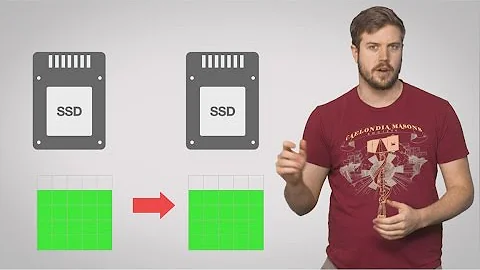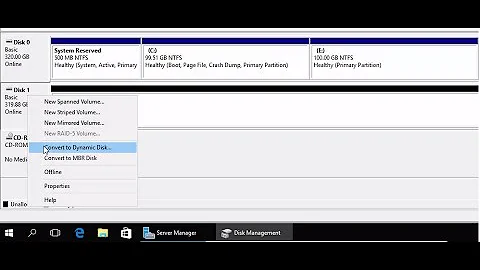What are the benefits of a disk install vs. Wubi? And can I migrate my settings easily?
Solution 1
Wubi doesn't change or alter your partitions, it installs to a virtual partition (a file) on the Windows file system. This is good if you just want to try out Ubuntu, and it's easy to uninstall.
If you want a normal dual boot then you can use the Ubuntu CD/USB to partition during the installation. If you have Window Vista/7 then I would create the free space first, before attempting to install Ubuntu.
If your intention is to test Ubuntu, the you can boot from an Ubuntu CD/USB in live mode, and select Try Ubuntu, just to make sure that it's compatible or to see if you need any special drivers for your hardware.
Advantages
- Wubi is easy for Windows users with basic computer skills
- Its convenience
- No need to burn a CD or create a USB Installer
- It installs like any other windows application
- It can easily be uninstalled from control panel.
Disadvantages
- The system will run slightly slower than it would on a true partition
- The difference in speed will be especially noticable if your system is old
- Data accessibility of other partitions when using Ubuntu
- Anything happens to Windows can affect Ubuntu as well
Solution 2
Wubi isn't virtualized. It's simply an alternative bootloader solution. It works by using a special bootloader that can be chained from NTLDR or BOOTLDR. From there, it loads the Linux kernel and a modified initrd (initial ramdisk) containing FUSE and ntfs-3g into RAM. The initial ramdisk's boot scripts will use ntfs-3g to mount your Windows partition, find the Ubuntu virtual partition and then loop-mount it. It'll then use the 'bind' option to remount the NTFS partition under the newly-mounted virtual partition's /host, perform a chroot to the virtual partition, and then exec() the /sbin/init or whichever therein.
None of which requires virtualization, nor is any of it a new technique. Ten years ago ago, DragonLinux (based on Slackware) supported essentially the same virtual partition technique, but instead using LOADLIN through DOS. It also supported simply installing into a subdirectory on a FAT partition, where special hidden files were used to store POSIX attributes (This was called "umsdos" filesystem, and was removed from the kernel in 2.6.11)
Also, depending on the condition of your NTFS partition (number of files, fragmentation, other factors), your performance hit may be slight, or it might be quite dramatic. In the worse case, a Wubi install may only yield disk performance equal to 5% of an install into a native partition (but your chances of experiencing such horrid performance are next to none.)
Related videos on Youtube
Alex
University student with an unhealthy fixation on battery life. Currently using 13.04.
Updated on September 18, 2022Comments
-
Alex almost 2 years
I chose to do the Wubi install because it was short, simple, and easy to reverse (no messing with partitions required). To be honest, I can handle the lack of a hibernate function.
I haven't really heard many other benefits of installing on a separate partition than hibernation and negligibly faster hard disk read/write. Yet almost everyone I encounter seems to have opted for the disk installation. Are there more benefits I should be aware of, especially as a college student who wants a fast, efficient machine for documents, web browsing, etc. (nothing big like gaming, I can run that on Windows)?
Also, I have a fair amount of settings and packages installed that I spent a bit of time on and would rather not have to do again. Is there any way I can migrate all of these settings from the virtual disk on my C:/ drive (Wubi installation) to the disc installation in another partition? (I have a 16GB USB drive if that'll do the trick)
-
Mitch almost 12 yearsWhat setting are you talking about migrating?
-
-
 TrailRider almost 12 yearsMitch beat me to this, he posted his answer as I was typing mine so I will just +1 here. I would also add in answer to the last part of your question, it is possible to migrate a WUBI install to a full install by creating a partition, copying your virtual disk info to it and then installing grub, it is slightly more work than a clean install but maybe easier than redoing all your programs and settings. This is just a rough outline of the process, if you want to do it there are several great answers on askubuntu on exactly how to do it, just search for "Migrate Wubi install"
TrailRider almost 12 yearsMitch beat me to this, he posted his answer as I was typing mine so I will just +1 here. I would also add in answer to the last part of your question, it is possible to migrate a WUBI install to a full install by creating a partition, copying your virtual disk info to it and then installing grub, it is slightly more work than a clean install but maybe easier than redoing all your programs and settings. This is just a rough outline of the process, if you want to do it there are several great answers on askubuntu on exactly how to do it, just search for "Migrate Wubi install" -
Alex almost 12 yearsIn retrospect I doubt I'll really need to worry too much about the settings. A lot of the time I spent was spent figuring out how to do things, now that I know how to do them I should be able to restore what I've done without much effort. Although I'm not quite sure I'd need to do the disc install at all. I have a pretty new system, with a fairly fast processor (for a laptop) and plenty of RAM (I'm not running this on an old box or anything). Nor do I ever have any crippling problems with Windows. Thanks for the advice - I think I'll stick with Wubi, it seems to work just as well.




